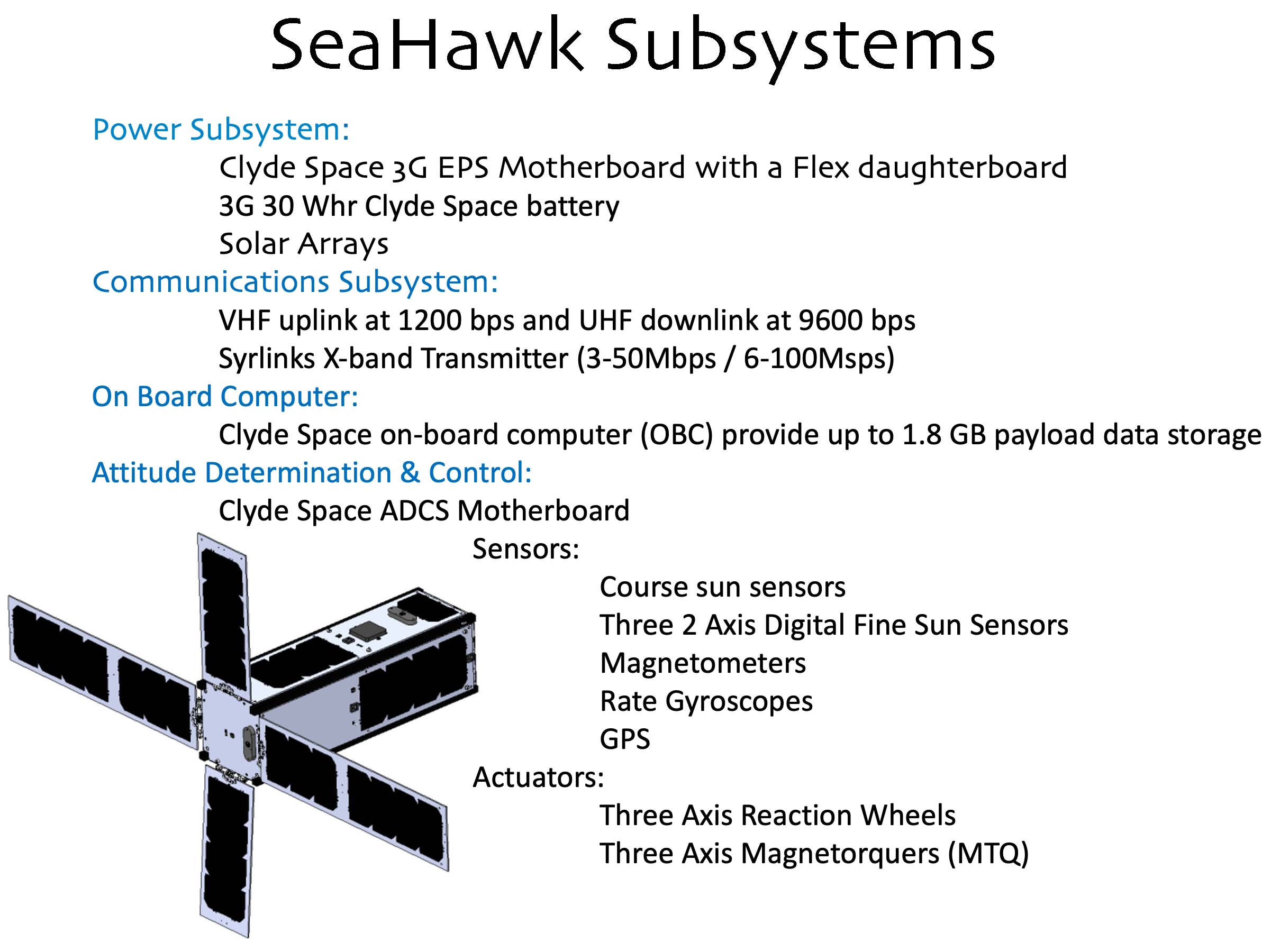SeaHawk/HawkEye ▸ Mission Summary
SeaHawk Mission Summary
The goal of the SeaHawk program was to construct and demonstrate the potential
scientific applications of a high resolution (~120m) ocean color instruments on
a 3U (10cm x 10cm x 30cm) CubeSat Platforms. ACC Clyde (Scotland)
provided the CubeSat bus named SeaHawk. Cloudland Instruments (California)
provided the Hawkeye Sensor. The program was funded in 2014 by the Gordon and
Betty Moore Foundation and is administered by Dr. John Morrison – UNCW.
NASA provided “advice and review” during the development phase and with formal
NASA/HQ Space Act Agreement (2017), provides services for the collection,
processing, calibration, validation, archive and distribution of the data.
Mission Parameters
- Launched December 3rd 2018
- Nominal orbital height = 575 km
- Sun-synchronous around 10:30am
- 9-day repeat orbit
- Baseline orbital lifetime of 1 year (18-24 month)
- Baseline of 15 scenes per day (200 x 600km of approximately 120 meter resolution - 100MB/scene)
- X-band downlink (Wallops & Alaska) data rate of 6 - 100mbps
- Weight:
- Instrument: less than 1 kilogram
- Total (spacecraft plus instrument): less than 5 kilograms
- Off-the-shelf CCD arrays
- Sensitivity comparable to SeaWiFS
- Open intellectual property and knowledge sharing

